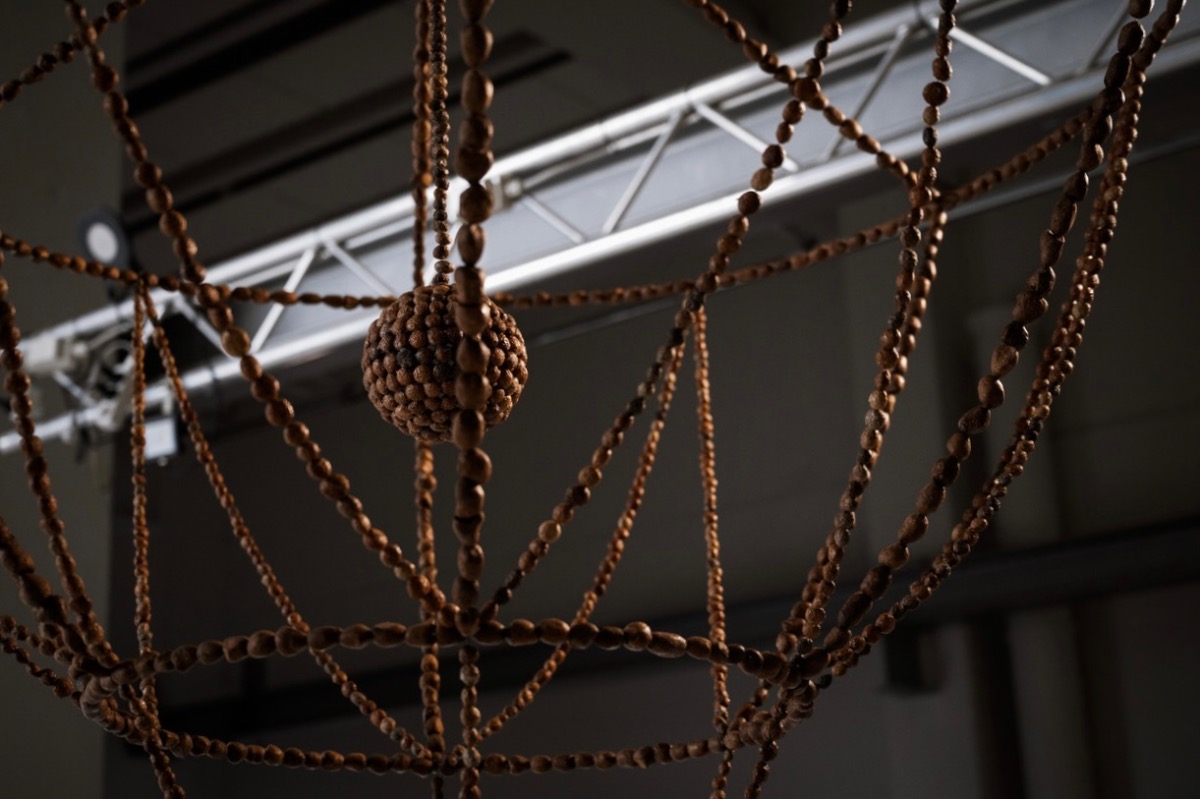
Material Matters
The 28th edition of the Mänttä Art Festival celebrates materiality
While the title The Blast might sound a little loud for this year’s Mänttä Art Festival in Finland, attending the 28th edition of the contemporary art summer show is undoubtedly an uplifting experience. The exhibition in a former factory hall brings together the works of 36 Finnish artists. The curator has deliberately chosen artists not only from the capital, Helsinki, but also from studios in more remote areas - remote being a relative term in a country that spans over 1,100 kilometers from south to north and has a population of fewer than six million. In Finland, where even many city dwellers own cottages in the forest or by a lake, being "remote" is an integral part of the culture and the art it inspires.
Mänttä, a town with slightly more than 9000 residents, has attracted many artists over the years, tells director Sampsa Virkajärvi, himself being one of them. They are drawn not only by the natural surroundings of forests and lakes, but also by the space and affordable living conditions, compared to the city. The festival has built a reputation as a stage for contemporary art in Finland, supported through collaborations with other events, such as this year’s piano festival. With rotating guest curators, it doesn’t adhere to a specific artistic signature but follows the vision of the chosen curator. For this edition, sculptor Heli Ryhänen was invited to present her choice of artists.
Upon entering the exhibition hall, a painting with blue horizontal stripes immediately catches the eye. Upon closer inspection, it’s not a traditional painting - artist Laura Lilja created a panel of rhythmic blue bands using cargo straps typically employed by trucks to secure transport. She found these straps on the island of Reposaari, where she lives. This piece, while directly taken from (economic) life, relates to the history of painting with its minimalist language and horizontal composition. It is abstract, concrete, while also containing the possibility of a landscape.
Laura Lilja: Cargo Blue, 2023.
In one of the upper rooms, a set of paintings by Reima Nevalainen create an impressive, tense atmosphere. Nevalainen seems less concerned with creating something aesthetically pleasing but is focused on a genuine expression through a process that involves layering and collaging paint, paper and other materials. As he noted, it’s difficult, if not impossible, to discuss the content of a painting without referring to its technique and materials. The figure in space is a recurring motif in his work, but this cannot be separated from how the figure is executed - it appears torn, rough, in motion, and thus communicates distress or another state.
Reima Nevalainen: Ox.
Reima Nevalainen: Cornered.
Interestingly, the two painters I found captivating in the exhibition both treat their paintings as objects, their technique bordering on sculpture. Here the hand of the sculptor-curator is visible, who has an interest in surface, scale, and the spatial presence of works. Throughout the show, the selection of sculpted works, along with spatial installations, appears more extensive and sophisticated than works in other media, such as painting or photography. A giant yet delicate flower, made from thousands of acrylic beads, hangs from the ceiling of the factory hall. This piece by Hanna Vihriälä is not just a floating flower but a statement of patience and precision, meticulously handcrafted. Underneath, on the ground floor, Essi Immonen presents a cerebral yet poetic installation. Using copper pipes, chipboard and concrete molds, she creates what could be the imprint of a contemporary living situation, without specifying a place or time. Her approach is reminiscent of an archaeologist digging for meaningful traces, but she does so in the present.
Hanna Vihriala: Blowingflower, 2024.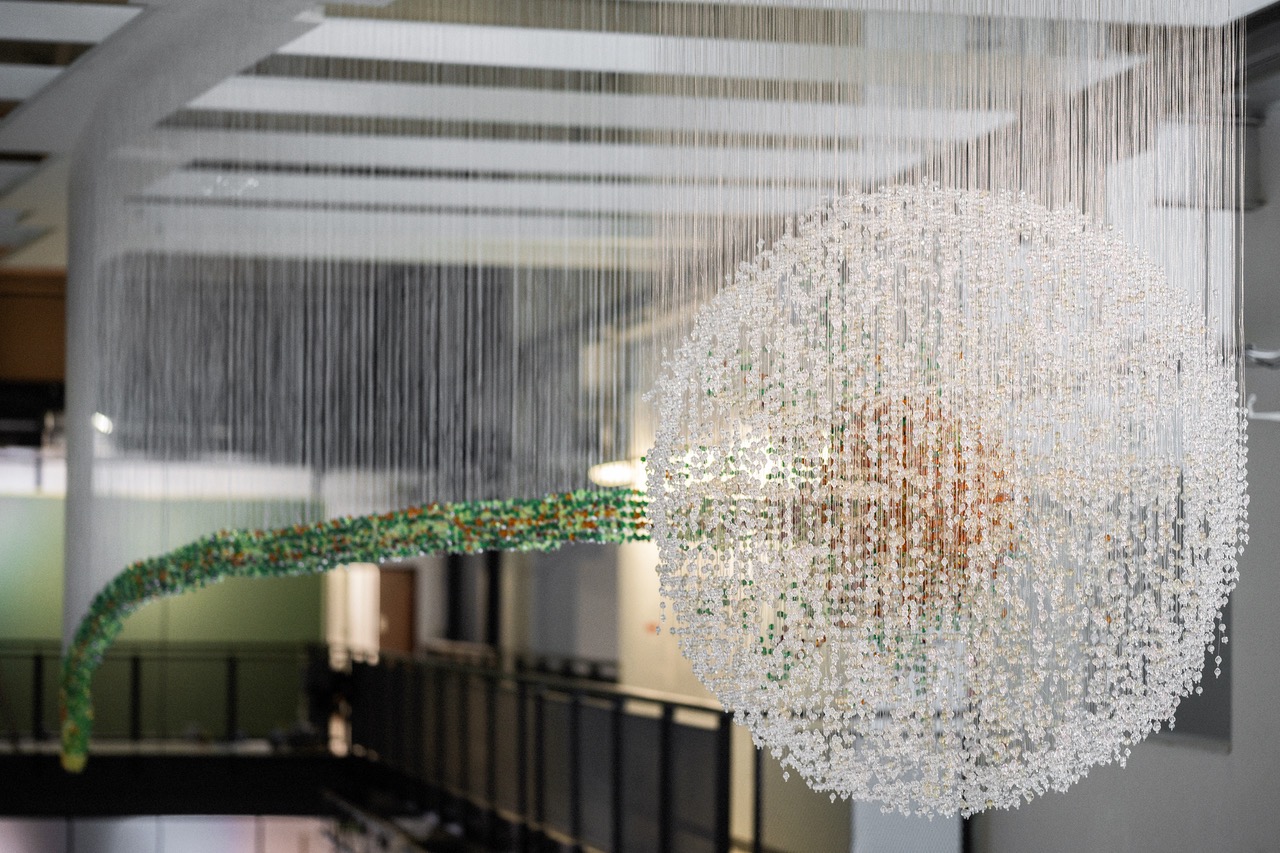
Essi Immonen: +0 (Overflow), 2024.
In another room, the attention shifts to nature. Chandeliers made of dark beads turn out to be composed of deer and hare droppings mixed with glue. On a strung, and hanging from the ceiling the collected shit gets an unexpectedly elegant appearance. The artist behind these works, Anni Rapinoja, lives and works on the island of Hailuoto, where she is daily busy collecting natural materials. She observes pieces of skin, feathers, or leaves of plants as they dry in her studio or garden, waiting for their potential to speak to her. Rapinoja is one of many artists in the show (and in Finland) who draw inspiration from a close connection to nature. In this context, the work of photographer Touko Hujanen is also noteworthy. He followed a family who is living off the grid in the forest in Vatimo, in eastern Finland, documenting their self-sustaining lifestyle. They grow food, build their shelter, educate children as much as they can without buying stuff or further dependency on ‘the system.’
Anni Rapinoja: detail from series Natural Lights, 2014 - 2024.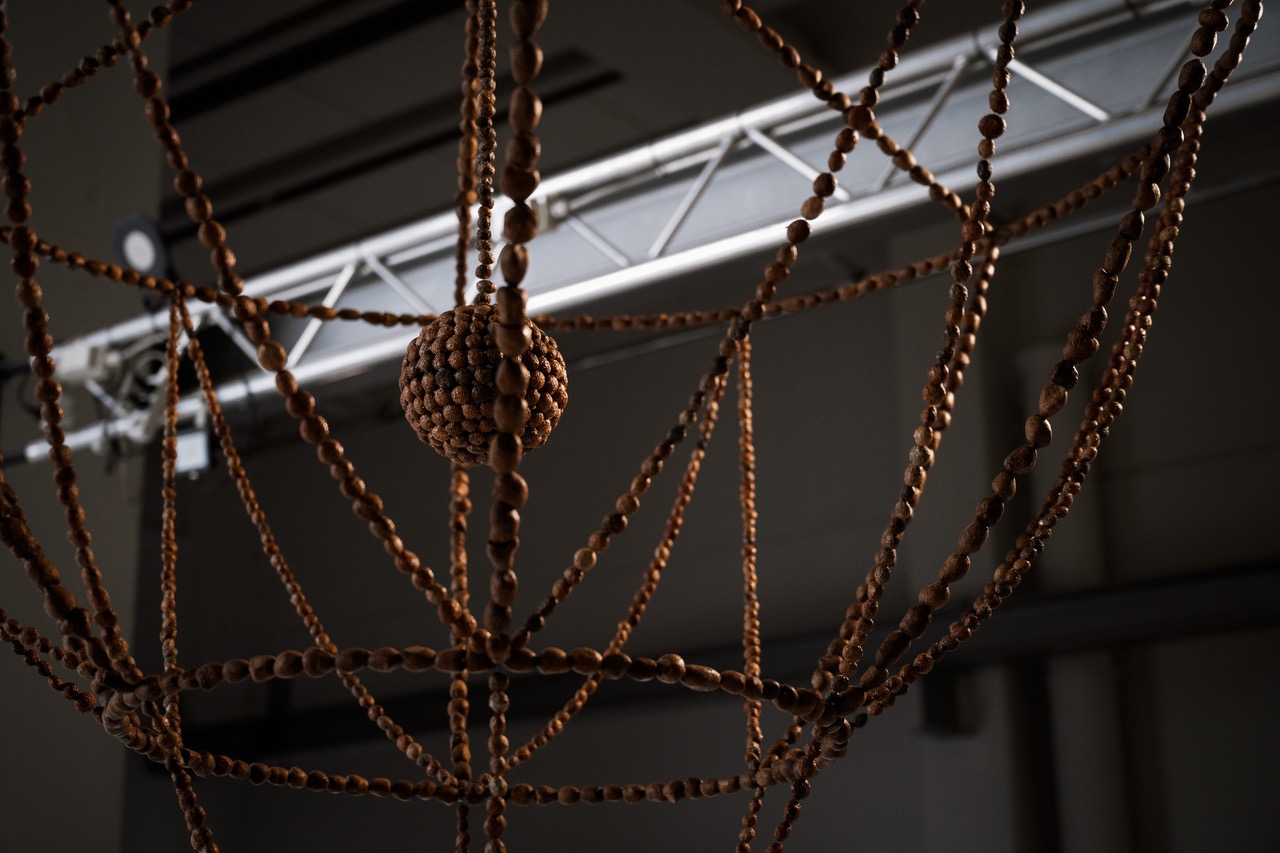
Touho Hujanen: from series Forest Family.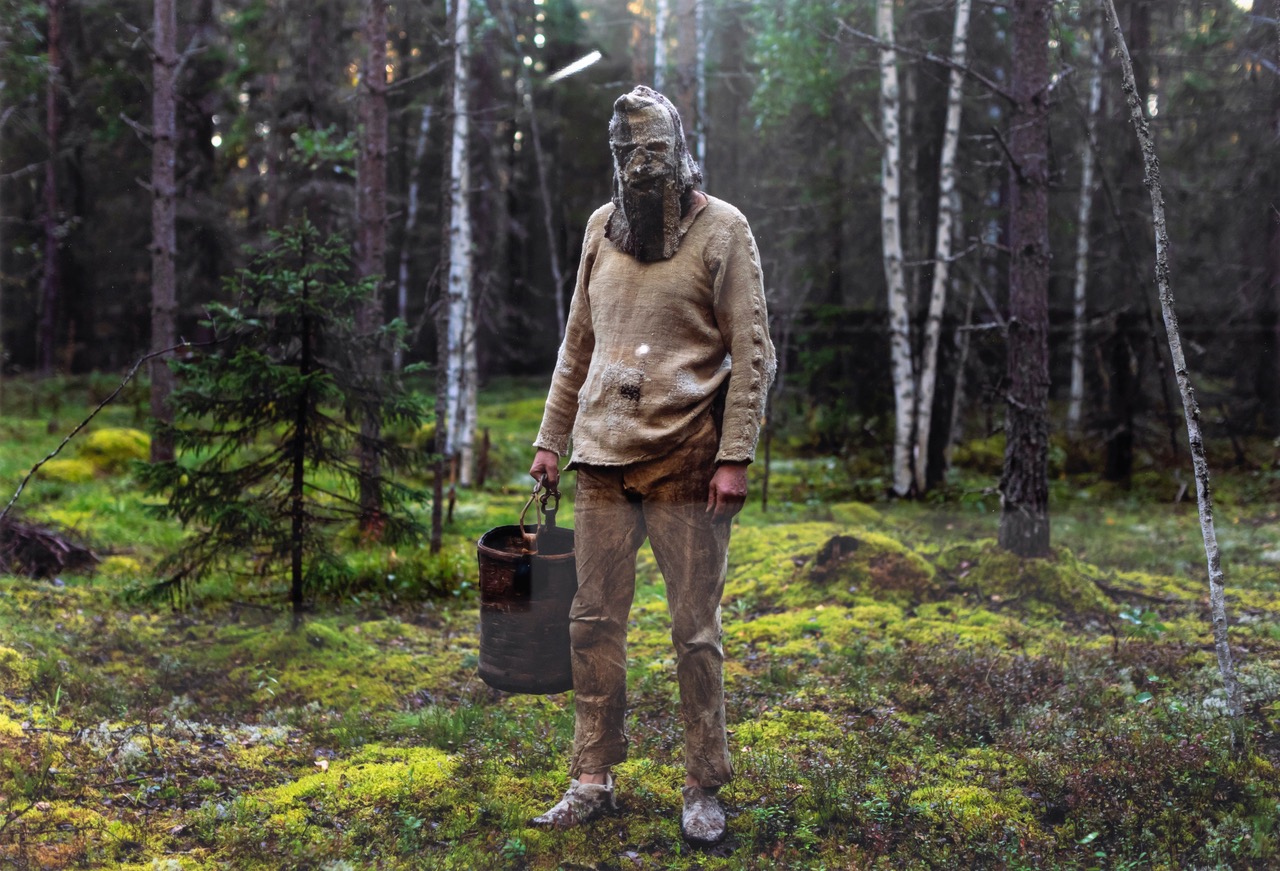
Touho Hujanen: from series Forest Family.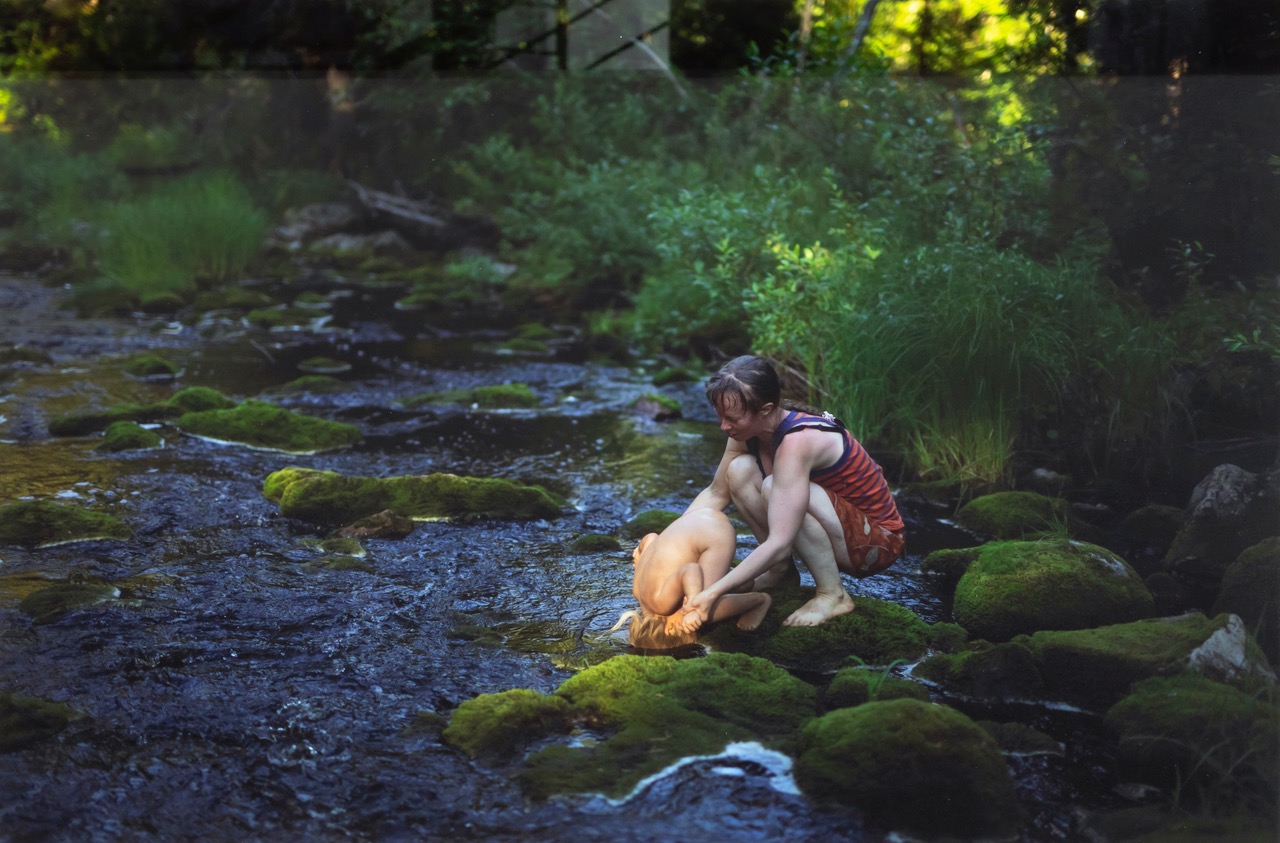
Despite the diversity of the works (some leaning towards a documentary or conceptual approach, others focusing on the form, light or material itself), most pieces engage the visitor in the first place through visual attraction, with optical, haptic, and spatial qualities playing key roles. This preference may leave out certain other areas, but therefore it presents a clear curatorial standpoint of what matters. In a world increasingly dominated by digital and ephemeral imagery, the exhibition foregrounds the physical encounter with things and with nature, in which scale, texture and space matter. Ultimately, visiting Mänttä doesn’t feel that remote. Navigating an exhibition that emphasizes a physical understanding of the world feels actually quite natural. It is like being among artists who think with their hands, and do not easily get bored with the appearance, surface and touch of things. There is always the possibility of another perspective.
Mänttä Art Festival takes yearly place in summer.